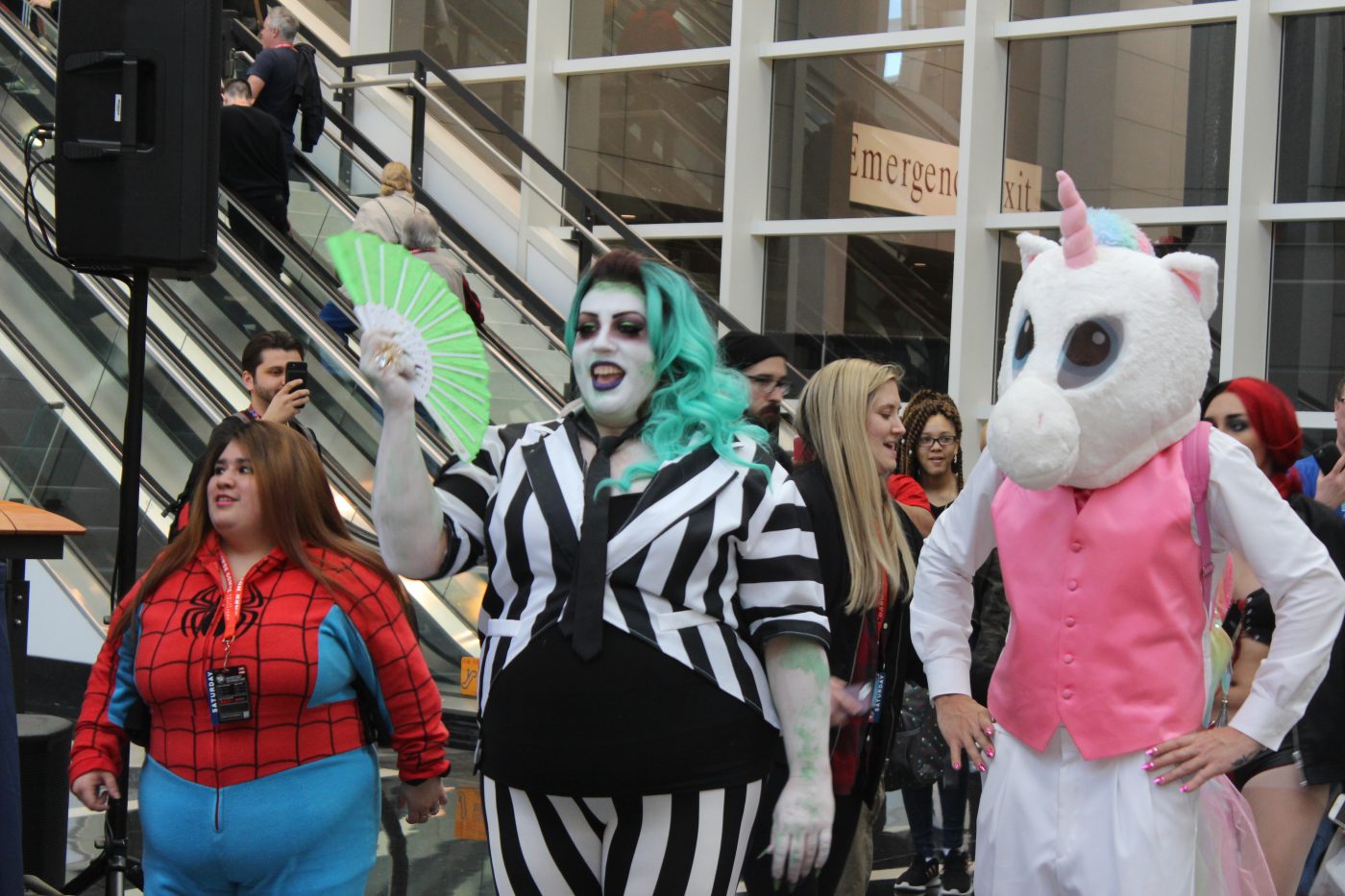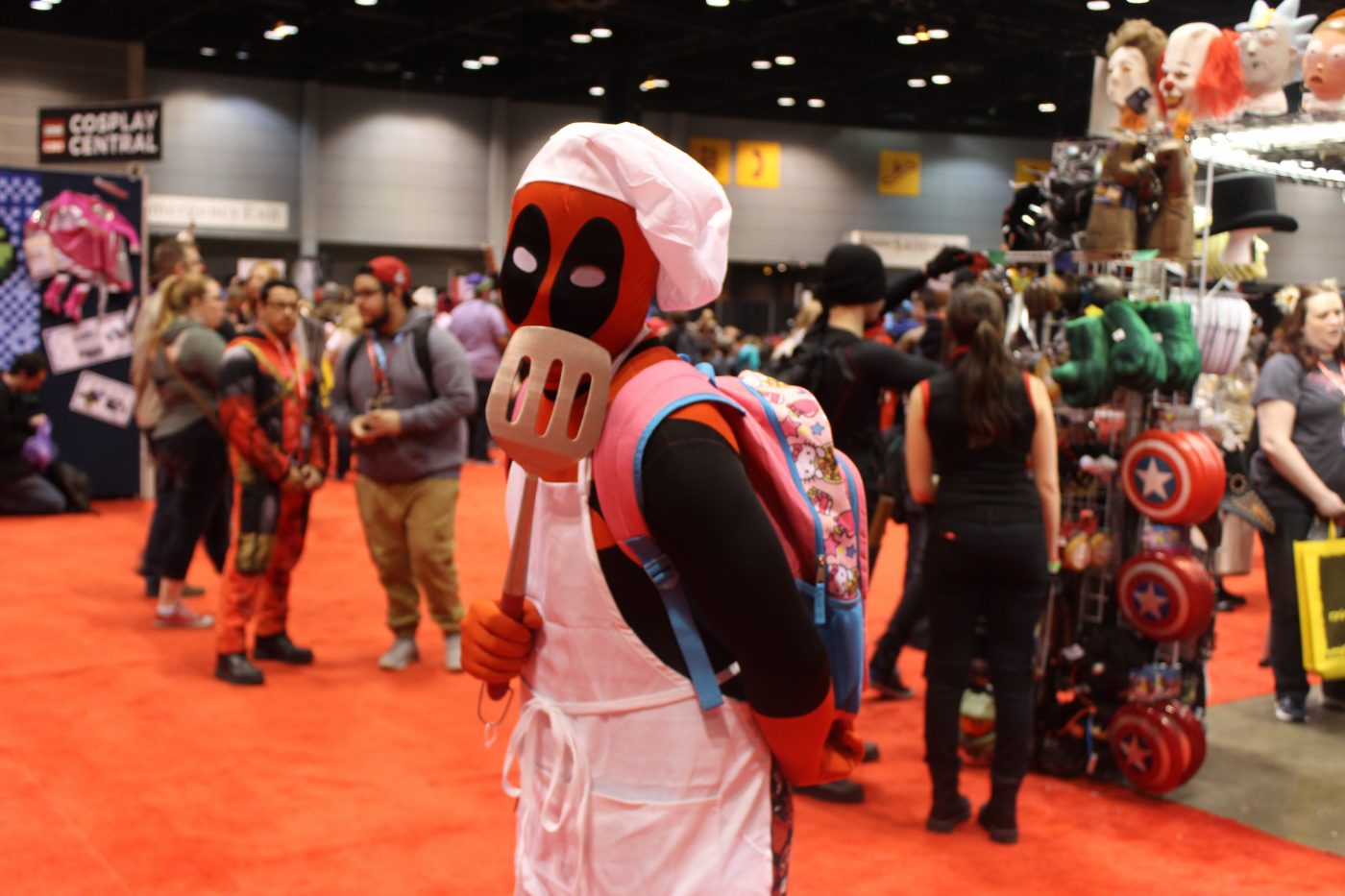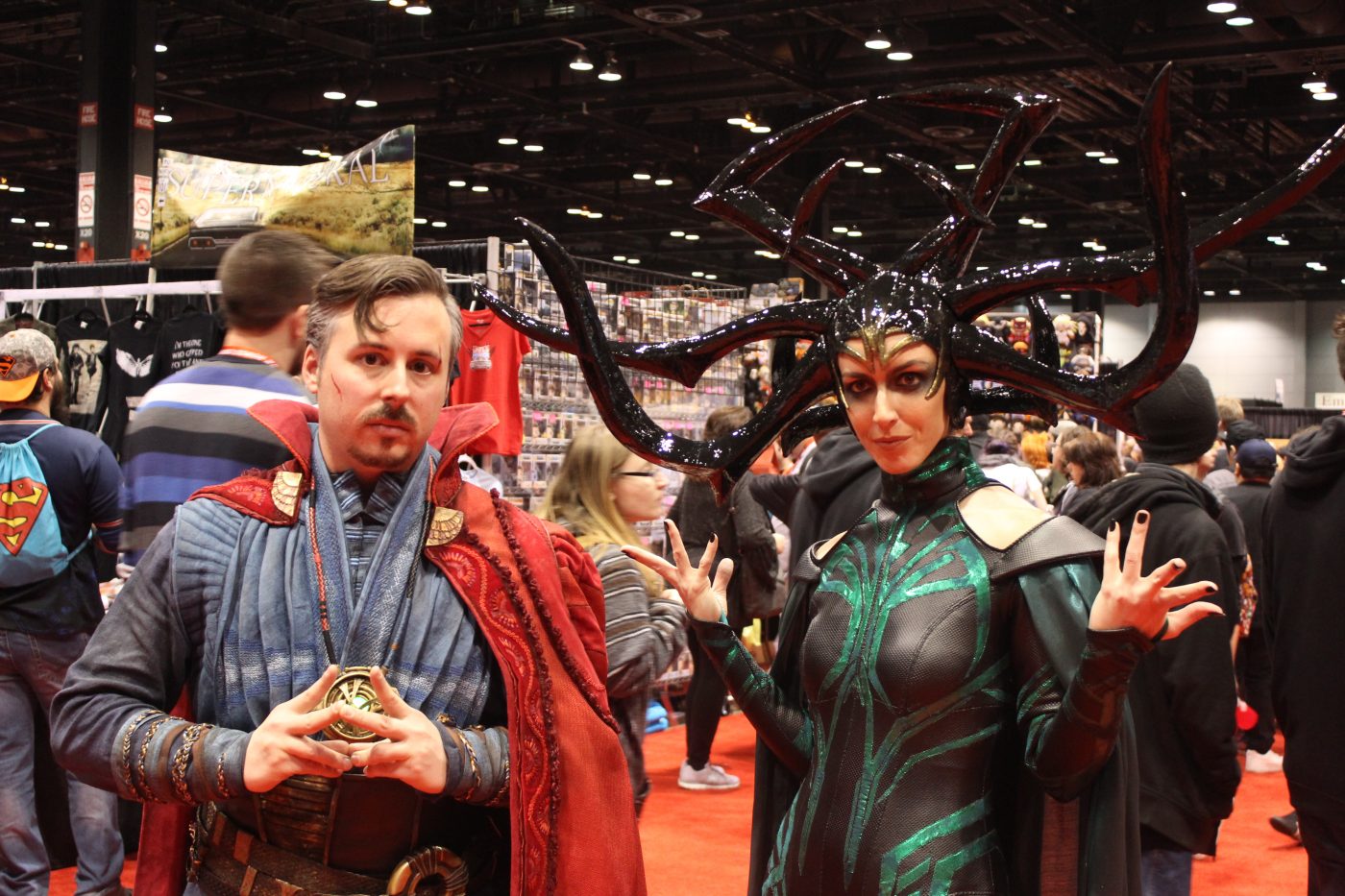Written by Gerardo Salgado Flores

“In the comic book industry you work for your comic book, panels, characters, and if they (Comic Book publishers and editors) see the popularity then they’ll see that and take notice but either way the community plays a huge role in bringing awareness.” – Chris Sanchez
The Chicago Comic & Entertainment Expo (C2E2) is Chicago’s take on comic book conventions and one of the city’s most memorable events to attend. C2E2 takes place at McCormick Place during the Spring season and on the weekend of April 6th-8th we rejoiced with panels touching on topics such as students working with comic mediums, cosplaying on a budget, diversity in cosplay, as well as #BlackComicsMonth.
Many wonderful artists, along with television and movie stars – like Mark Millar, Phil Lamarr, R.L Stine, and Chicago’s favorite Svengoolie – get to feel that nostalgia with fans, especially those intent on meeting, greeting, and experiencing everything at C2E2. The event makes any comic book geek flip with joy and wonder, especially when meeting their idols, and you can’t help but let that 7 year-old in you jump out and cry with glee.

When attending the convention, one walks into a whole new world that disconnects from the outside and separates itself from other industries. This convention merges diverse communities and different worlds into one while enabling guests and cosplayers to be themselves, full of creativity, love, and enthusiasm for their craft and work.
Delving into the diverse communities of C2E2 provides an opportunity to cross paths with others while also gaining valuable knowledgeable especially through its many informative panels. As an example, as I wandered around to find a panel that felt close to home and close to my heritage, I stumbled upon one in a small hidden room. There, I was able to experience and take in the Latin genre panel, “Hispanics in Comic Books,” hosted by Chris Sanchez and John Marroquin. In the discussion, the artists provide a glimpse into this exciting movement that is gaining momentum in indie comics. They explained how Hispanic and Latino characters are being created and portrayed within the comic industry.

This panel shed some light on creating and opening up the culture within the market. It also taught those in attendance some aspects of Latin American history. Sanchez and Marroquín questioned if it’s the comic book communities responsibility to merge these fascinating characters filled with culture to then only be fleshed out as characters that are already well known in the Comic Book community. With existing Hispanic comic book characters, a few are not able to become well known or form their own story, and a small percentage barely become fan-favorites of the community. Even if they do, they are portrayed as an anti-hero, anti-villain, or just a villain. On a brighter note, some of these anti-characters might just make it as criminals who are trying to change their life around…. nonetheless, they are still criminals.
“Kamala Khan (Ms. Marvel), Lunella Lafayette (Moon Girl), Miguel O’Hara (Spider-Man 2099), Miles Morales (Spider-Man), Robbie Reyes (Ghost Rider), Jaime Reyes (Blue Beetle) are well great and wonderful characters, but when are we able to see them on the big screen?” – Marroquin & Sanchez
The irony continued when they gave citeful data on the top three characters in movies of 2014. We (Latinos) were displayed as the Hispanic Thug, the Latino Cop, and the Sexy Latina Woman. “I love Ant-Man, but look at his friend Luis (Michael Peña), he plays a criminal. Yes, he is funny in the movie, but he is representing a thief and a criminal. When can we see a Hispanic Superhero on the big screen or even TV Shows?” asked Marroquín.
After talking briefly with attendees, Marroquín then touched upon the power that the Hispanic community has. Despite that, and the number of artists, illustrators, and even publishers being aware of this great community, there is still no voice that is being amplified in demanding these characters.
Engaging further in the topic, Sanchez added that being part of the comic book community is a business, but it is a business that that kids, teens and geeks still read and value. He followed that by remarking on how comic books are now the big topic and a great source of income in the film industry.
For example, within the competitive world of Marvel and DC Film, the Black Panther movie (about a Marvel Superhero and King of Wakanda, a fictional African nation in the Marvel Comics) grossed $1.2 billion during its theatrical run. Marroquin said, “African-Americans are very vocal about their superheros. When can we (Hispanics) raise our voice? Chicago has a big Hispanic community with a lot of love, but where is the voice?”

When it was time for audience participation and opening the floor for questions, the attendees were curious about racial stereotypes. One fan asked, “How can we as fans and creators change or eliminate the stereotypes of these diverse characters labeled as villains or anti-heroes?” Sanchez responded, “Make new characters without stereotypes. Bring new characters and new stories. We don’t need characters who don’t have father figures, or characters who live in the hood. Look at Moon Girl as an example.”
At first glance, it is very true. Often people from the community praise upon characters close to them, meaning a superhero without a father, or living in the ghettos or “hood,” which makes some people feel close to that character. That is great for character development and for diversity but that itself is just labeling a majority of the Hispanic characters as people from those places or those who reside in harsh living conditions. A lot of these story lines, unfortunately, are being created by Caucasian male writers and illustrators because that is how they see us.
One attendee also asked about the origin and creation of these characters and why they are never fully Hispanic, African, or of other descents. It seems to be always half this and half that aka half-and-half-ethnicities. Marroquín questioned, “Is it our fault, as in our community? Do we speak up about it? What should we do?”
Finalizing the panel, Marroquín and Sanchez touched on how culture is perceived within movies, comic books, and video games. They brought up two movies that acknowledged that Hispanic culture has been in filmmakers thoughts – “The Book of Life” (20th Century Fox) and “Coco” (Walt Disney). Both are distinctive films attracting the Hispanic community, but only one grossed well and created a vocal fan base while attracting a younger audience. Sanchez added, “It’s great to see ‘Coco’ being appreciated and supported by the community, and from other communities. Just look at the numbers! ‘Coco’ did great in Mexico and Japan! So seeing the support from everyone is amazing. Cultures should support other cultures, I agree 110%.” Marroquín added how different cultures can accept and support other cultures without racial stereotypes and generalizations, “I want it to become normal to the point that no one notices.”
I personally came to the realization that the Hispanic community has been active in the comic book world for awhile. Within the fan base, the forums, and the powerful characters, the love and support for diverse characters, and a wide range of cultures, is there, however, the community should be more vocal about their admiration for these characters in the film industry.

Evidently, Hispanic roots have and will continue to grow within this industry and it is just a matter of time, with continued support, for more of these superheroes to flourish.
# # #
Gerardo Salgado Flores is a young reporter, radio producer and a cyclist from Little Village. Since 2015, Salgado has been part of Yollocalli’s audio, radio and journalism program, “Your Story, Your Way!” In addition, he participated on the Social Justice News Nexus Fellowship, Cycle 4: Environmental Justice at the Medill School of Journalism at Northwestern University.